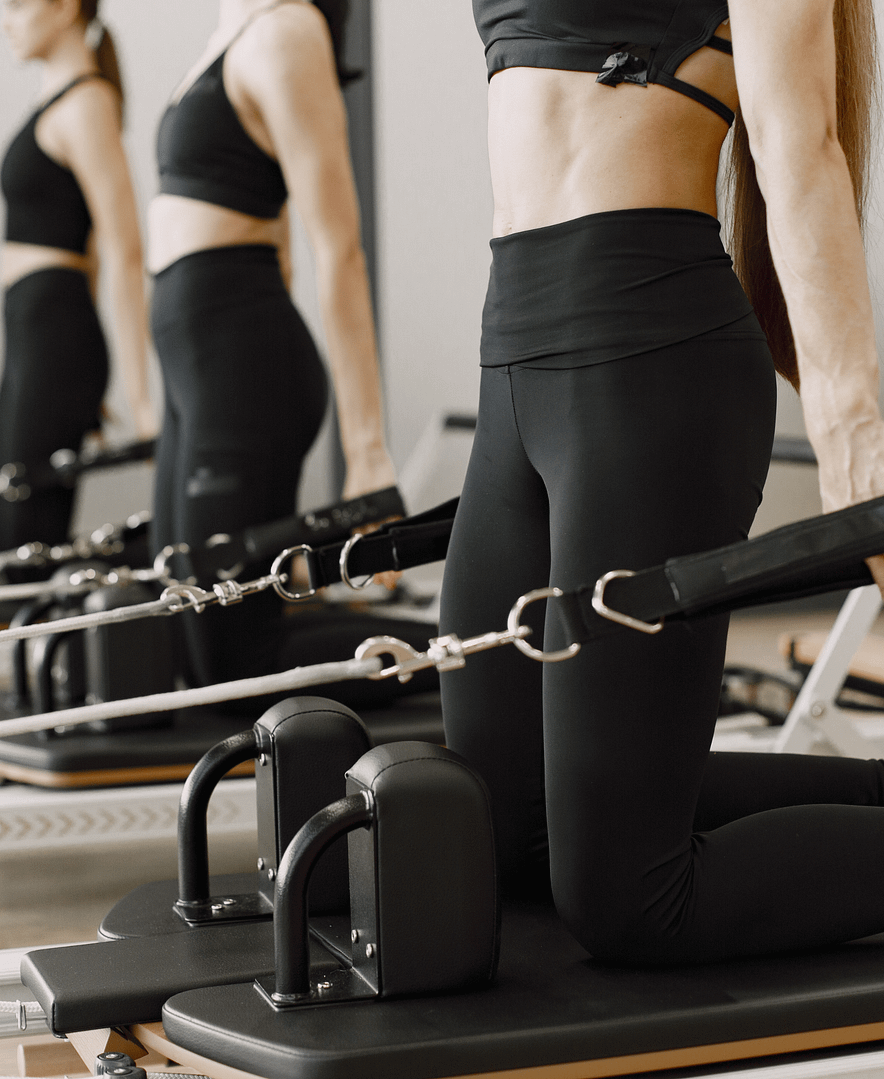1. Define Your Goals
Before you even begin your search, take a moment to clarify what you’re hoping to achieve from Pilates. Are you looking to improve your core strength? Increase flexibility? Rehabilitate from an injury? Different studios may focus on different styles, such as:
- Classical Pilates: Closely follows the original method developed by Joseph Pilates. Great for those seeking a more traditional, precise approach.
- Contemporary Pilates: Incorporates modern fitness techniques and equipment, offering more variety in movements and exercises.
- Rehabilitation Pilates: Focuses on injury prevention and recovery, often working closely with physical therapists or healthcare professionals.
Knowing your goals will help you narrow down studios that specialize in the style or approach that best fits your needs.
2. Check the Instructors’ Qualifications
The quality of your Pilates experience will largely depend on the expertise and teaching style of the instructors. Look for studios with certified and experienced instructors who have undergone comprehensive training programs. Certifications from recognized institutions, such as Pilates Method Alliance (PMA), PoleStar, Balanced Body, or STOTT Pilates, ensure that instructors are knowledgeable and follow industry best practices.
It’s also a good idea to look for instructors with experience in addressing any specific needs you may have, such as pre/post-natal fitness, injury recovery, or advanced practice.
3. Class Sizes and Personal Attention
Class size is a crucial factor when choosing a Pilates studio, especially if you’re a beginner. Smaller classes typically allow for more personal attention, ensuring that instructors can correct your form and tailor exercises to your abilities. Studios that cap class sizes create a more intimate environment where you’ll receive guidance and support.
If you’re new to Pilates or have specific physical concerns, you may also want to consider starting with private sessions. These offer one-on-one instruction, allowing the teacher to give personalized feedback and design workouts around your individual needs.
4. Equipment and Facilities
The studio’s equipment is another important consideration. Pilates can be done on a mat, but it’s also commonly practiced using specialized equipment like reformers, cadillacs, chairs, and barrels. If you’re interested in equipment-based Pilates (often called Reformer Pilates), make sure the studio has well-maintained machines.
Additionally, the cleanliness and overall vibe of the studio matter. Pilates is a mindful practice, so you want to feel comfortable, relaxed, and motivated in your environment. A well-lit, clean, and welcoming space can make all the difference in enhancing your experience.
5. Location and Schedule Flexibility
To attend Pilates regularly, you’ll want to find a studio that is conveniently located—either near your home, workplace, or somewhere in between. If it’s too far out of your way, it’s easy to fall off the wagon and skip sessions.
Equally important is the studio’s class schedule. Does it offer a variety of classes throughout the day? Early mornings, lunchtime, evenings, and weekends? A flexible schedule can make it easier for you to stick to your routine, especially if you have a busy or unpredictable timetable.
6. Pricing and Membership Options
Pilates classes can range from affordable group sessions to pricier one-on-one private lessons. It’s important to find a studio that fits your budget while still providing quality instruction. Some studios offer drop-in rates, class packs, or monthly memberships. Be sure to inquire about pricing structures, cancellation policies, and any discounts for long-term memberships.
If you’re new to the studio, check whether they offer introductory packages or trial classes. These allow you to get a feel for the instructors, environment, and class structure before committing to a membership or package.
7. Reviews and Reputation
One of the best ways to gauge whether a Pilates studio is right for you is to read reviews from current or past clients. Look at the studio’s website, social media, and review platforms like EverThryve to get a sense of its reputation. Positive reviews that highlight helpful instructors, a welcoming environment, and effective classes are great indicators of a good studio.
If possible, talk to people in your local fitness community for recommendations. Word of mouth is often the most reliable way to find a high-quality Pilates studio.
8. Studio Vibe and Community
Pilates can be a personal, even transformative, practice, so it’s important to feel comfortable and welcomed in the studio you choose. Some studios foster a strong sense of community, where instructors and students build supportive relationships.
Attend a trial class or take a tour of the studio to get a sense of the atmosphere. Do the instructors and staff seem friendly and approachable? Are the other students engaged and respectful? Finding a studio where you feel at ease can keep you motivated and inspired in your practice.
Conclusion
Finding the right Pilates studio involves balancing your personal goals with the practical aspects of location, cost, and class availability. By considering your fitness objectives, class structure, instructor qualifications, and the studio’s environment, you can choose a space where you’ll feel supported and inspired to grow in your Pilates journey.
Remember, Pilates is all about connecting your mind and body—so choose a studio where you feel aligned, both physically and mentally.




